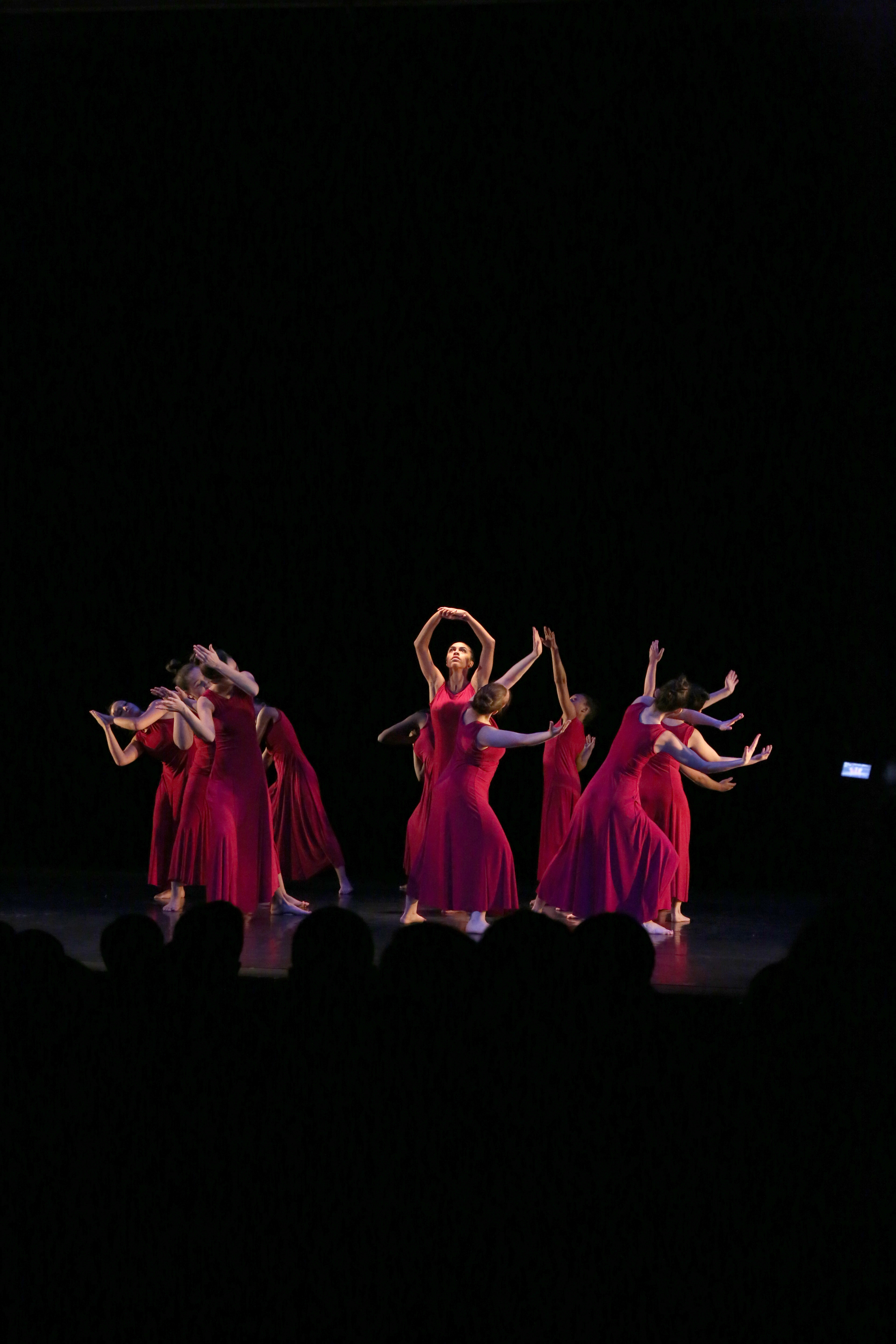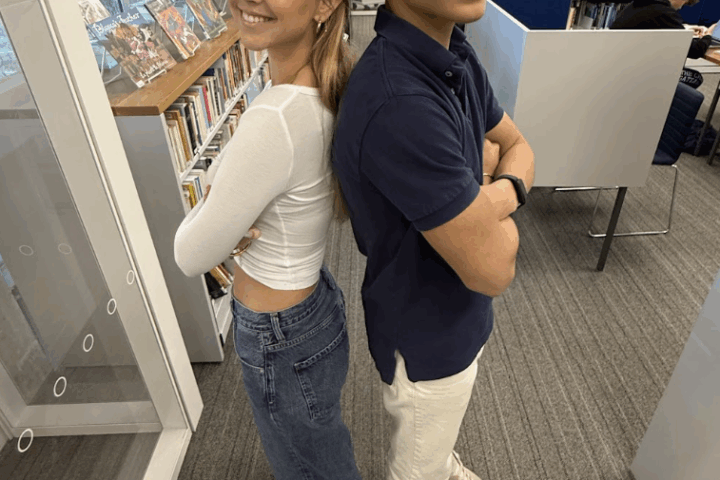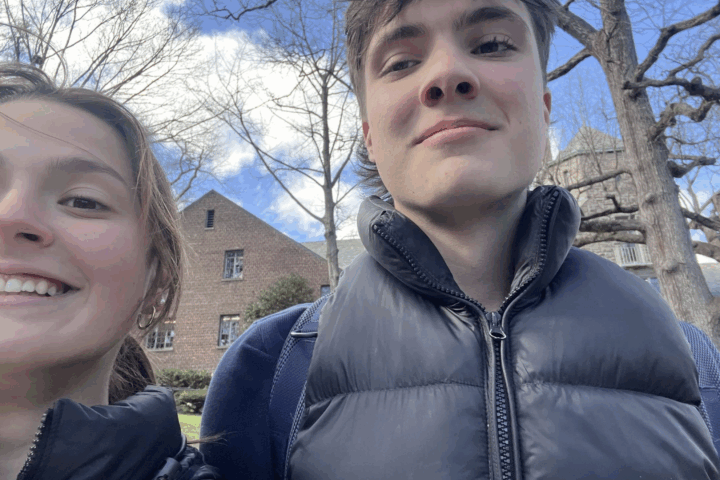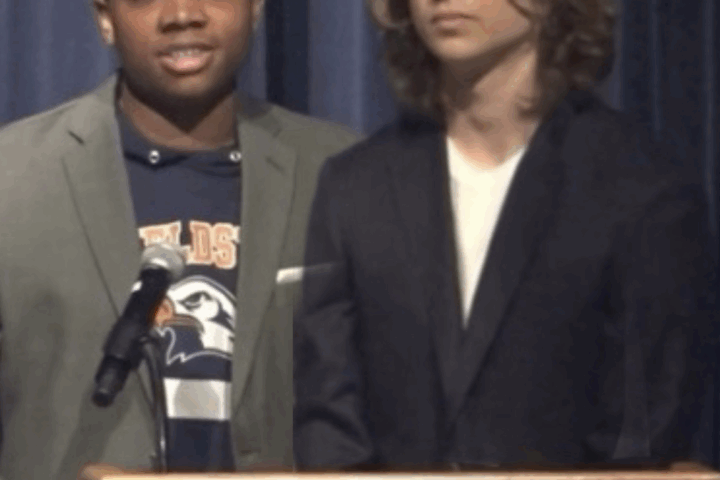
This past Thursday, the Fieldston Dance Company put on an ethereal performance for the Upper School community, infused with the grace and technical rigor of true professionals. During the assembly, the dancers performed four numbers which they co-choreographed and an excerpt from Song of Helena, a piece composed by visiting choreographer Michael Mao. Mao was this year’s selection for a guest artist, decided upon by Rob O’Neil, director of the Dance Company. “Each year, I think about who is in the Company and what New York choreographer I can find who will both challenge the dancers and push them forward,” said Mr. O’Neil. “The Repertory Project and dance at Fieldston is quite well known in the dance world. If choreographers have the time, they do not hesitate to become a part of this program.” Michael Mao’s choreography has secured international acclaim, with performances throughout the US, Asia, Europe, and Mexico. His work with teenage immigrants, called “Learning English Through Dance” (ESLdance), has been replicated nationally and has received grants from the National Endowment for the Arts and the New York State Council on the Arts.
Unbeknownst to many, the Fieldston dancers had just twelve class periods to learn Mao’s Song of Helena, and four hours to design and co-choreograph their individual routines. Song of Helena is a harrowing narrative inspired by an inscription left by an 18-year-old girl who was incarcerated by the Gestapo circa 1944 (it reads, “Oh, mama, do not cry. Immaculate Queen of Heaven, support me always.”). “The real challenge with this dance,” said Mr. O’Neil, “is that it is not counted to specific notes in the score. The dancers needed to be consistent in riding the wave of the music. With practice and opening up a sense of ensemble timing, the dancers were able to beautifully blend their dancing to the rhythm.”
In rehearsing the routine, students were both subliminally and deliberately drawing inspiration from Mao’s work for their own choreographies. Rachel Osei-Owusu, a junior and first year dancer for the company, co-choreographed a vivid and spiritual study performed during the assembly. Of her piece, Rachel said, “we went in with an open mind, and a clear idea about how we wanted to change specific moves from the original dance, but as we continued, things just fell in line. In the end, we were really happy with the quality of movement and emotion that our dancers were able to convey.”
Dani Vaamonde, also a junior and dancer in the company, had a different, but equally valuable experience co-choreographing her routine. “Our piece, the fourth study, was different than the other studies,” said Vaamonde, “because it was a combination of their adaptations of Michael Mao’s movements. Our vision was to see all of the pieces ripped apart–and in some cases, paused and then replayed–and then put back together. The final product showed exactly what we pictured. We were thrilled that the dancers were able to learn it all so quickly, considering this last study was created less than a month before the performance.”
Dani and her colleague’s decision to trust and use pieces from their fellow dancers’ routines reflects the deep respect and esteem that the dancers in the Fieldston Company have for one another. The dances, given their tight synchronization and demand for ensemble timing, give us a glimpse into the personality of the Company as well as their expertise. “We can talk about community, listening to each other, and uniting for a common purpose at Fieldston,” says Rob O’Neil, “but this piece was all of that in action. The routine demanded intricate cohesion and the instant response of the dancers’ bodies and minds. Everyone left their egos at the door, fully prepared to work together and eager to experience the raw magic of dance.”






